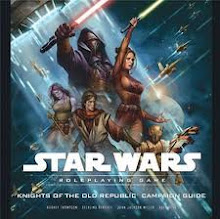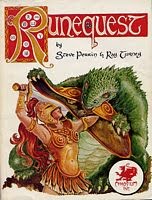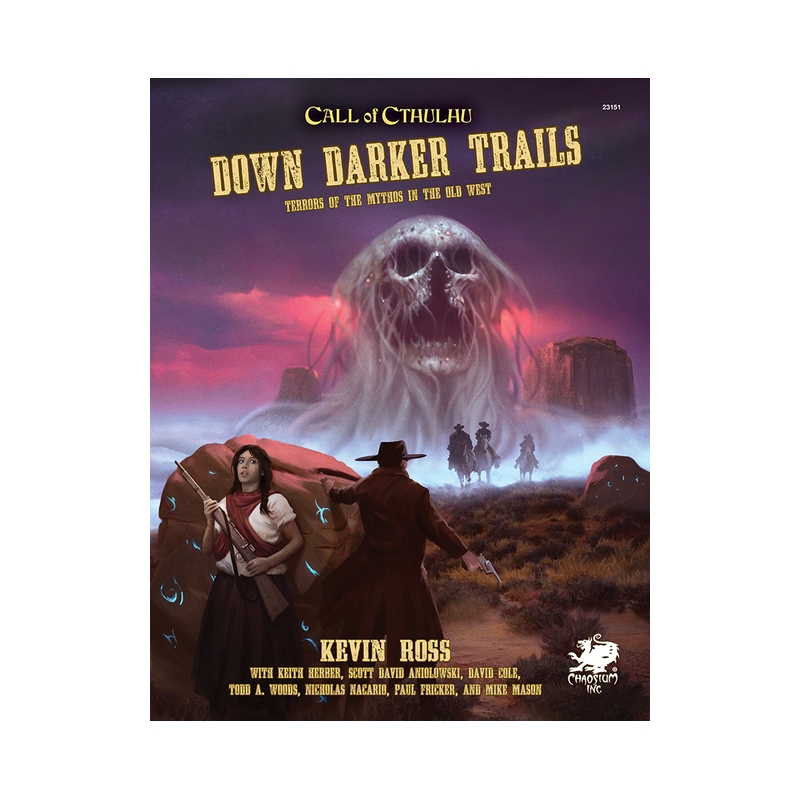
Who would have thought the humble orc would have gone through so many changes since first used in D&D?
Created by Tolkien for his Middle Earth cannon fodder, their use in Dungeons and Dragons made them a household name. First mentioned in the “White Box,” they were described as savage tribal creatures that live in caves or villages.
In pre-AD&D days, my orcs pretty much looked like the figures I found. Those early figs, Ral Partha I think, pretty much were the pig-faced orcs as depicted in Hildebrandt Bros. LOTR calendars, where more often than not they also seemed to wear roman centurion armor. Tolkien did not describe them as pigs, but having mentioned broad noses may have lead to the pig thing. I never really liked the pig look. James at Grognardia seems to have gone “full hog” with this “orc as pig” philosophy, making the orcs in his Dwimmermount campaign actually be boars given humanoid form. Hmm. That’s all good, but for some reason to me it seems less orc, and more like something from the old 80’s Teenage Mutant Ninja Turtles cartoon. When I picture a “boar man” it’s hard not to see it in a badly animated cartoon image in my mind. Not to say James is wrong , but that image is my least favorite as far as “What color is your orc.” Never mind that people are going to start confusing orcs with wereboars during the full moon.
Some pretty shitty orc miniatures came out in conjunction with the Ralph Bakshi animated LOTR 70’s film. In that movie the orcs were just dudes with fake tusks and caveman fur singlets, made to look pitch black and poorly rotoscoped. Bakshi even just shaded old footage of Zulu warriors from old movies for some of the orc scenes. There was some creep factor to that look, but it really made for some craptacular miniatures based on the film.
During the 80’s, orc figures evolved into a more ape-like look, and by around 1990 Warhammer 40000 continued with the green caveman meets ape look. Orcs now were becoming more thuggish than pure snarling evil as Tolkien portrayed them.
In the last several years, we have seen two newly portrayed types of orcs. There are the Peter Jackson movie orcs, which I really like. In the film, they come in all kinds, which is how Tolkien described them. Although I have not seen orc miniatures based on those films (I was semi-retired from gaming for most of the new millennium), I’m sure the look would/did translate well to miniature form. Especially those badass Uruk Hai.
Now, with the World of Warcraft generation, orcs have become something much more than the original basic primitive savage good and evil concepts. Later editions of D&D let you play pure orcs as characters, and WOW followed suite, even going so far as to make them cunning, brave, muscular heroic warriors. Wow indeed.
So my preference is for the snarling, hateful orcs of Tolkien. Orc women and children? Characters will never delve deep enough to find them. They will only continue to contend with gangs and troops of the foul beasts in caverns and dungeons of the sub-surface world. And they will continue to put them to sword and axe with a clear conscience. In my game world, orcs were born to die. And I guess in my world, they look like whatever figures I happen to have on hand (including my one remaining “pig-face” orc from the old days).
Created by Tolkien for his Middle Earth cannon fodder, their use in Dungeons and Dragons made them a household name. First mentioned in the “White Box,” they were described as savage tribal creatures that live in caves or villages.
In pre-AD&D days, my orcs pretty much looked like the figures I found. Those early figs, Ral Partha I think, pretty much were the pig-faced orcs as depicted in Hildebrandt Bros. LOTR calendars, where more often than not they also seemed to wear roman centurion armor. Tolkien did not describe them as pigs, but having mentioned broad noses may have lead to the pig thing. I never really liked the pig look. James at Grognardia seems to have gone “full hog” with this “orc as pig” philosophy, making the orcs in his Dwimmermount campaign actually be boars given humanoid form. Hmm. That’s all good, but for some reason to me it seems less orc, and more like something from the old 80’s Teenage Mutant Ninja Turtles cartoon. When I picture a “boar man” it’s hard not to see it in a badly animated cartoon image in my mind. Not to say James is wrong , but that image is my least favorite as far as “What color is your orc.” Never mind that people are going to start confusing orcs with wereboars during the full moon.
Some pretty shitty orc miniatures came out in conjunction with the Ralph Bakshi animated LOTR 70’s film. In that movie the orcs were just dudes with fake tusks and caveman fur singlets, made to look pitch black and poorly rotoscoped. Bakshi even just shaded old footage of Zulu warriors from old movies for some of the orc scenes. There was some creep factor to that look, but it really made for some craptacular miniatures based on the film.
During the 80’s, orc figures evolved into a more ape-like look, and by around 1990 Warhammer 40000 continued with the green caveman meets ape look. Orcs now were becoming more thuggish than pure snarling evil as Tolkien portrayed them.
In the last several years, we have seen two newly portrayed types of orcs. There are the Peter Jackson movie orcs, which I really like. In the film, they come in all kinds, which is how Tolkien described them. Although I have not seen orc miniatures based on those films (I was semi-retired from gaming for most of the new millennium), I’m sure the look would/did translate well to miniature form. Especially those badass Uruk Hai.
Now, with the World of Warcraft generation, orcs have become something much more than the original basic primitive savage good and evil concepts. Later editions of D&D let you play pure orcs as characters, and WOW followed suite, even going so far as to make them cunning, brave, muscular heroic warriors. Wow indeed.
So my preference is for the snarling, hateful orcs of Tolkien. Orc women and children? Characters will never delve deep enough to find them. They will only continue to contend with gangs and troops of the foul beasts in caverns and dungeons of the sub-surface world. And they will continue to put them to sword and axe with a clear conscience. In my game world, orcs were born to die. And I guess in my world, they look like whatever figures I happen to have on hand (including my one remaining “pig-face” orc from the old days).
























